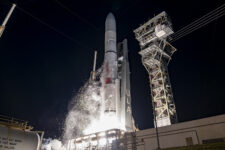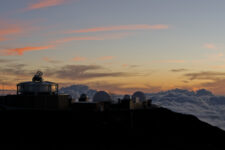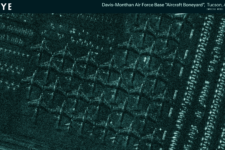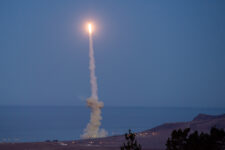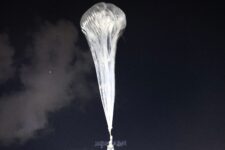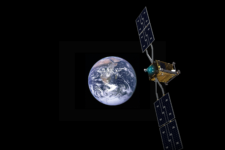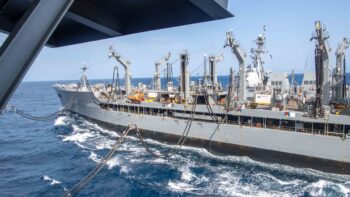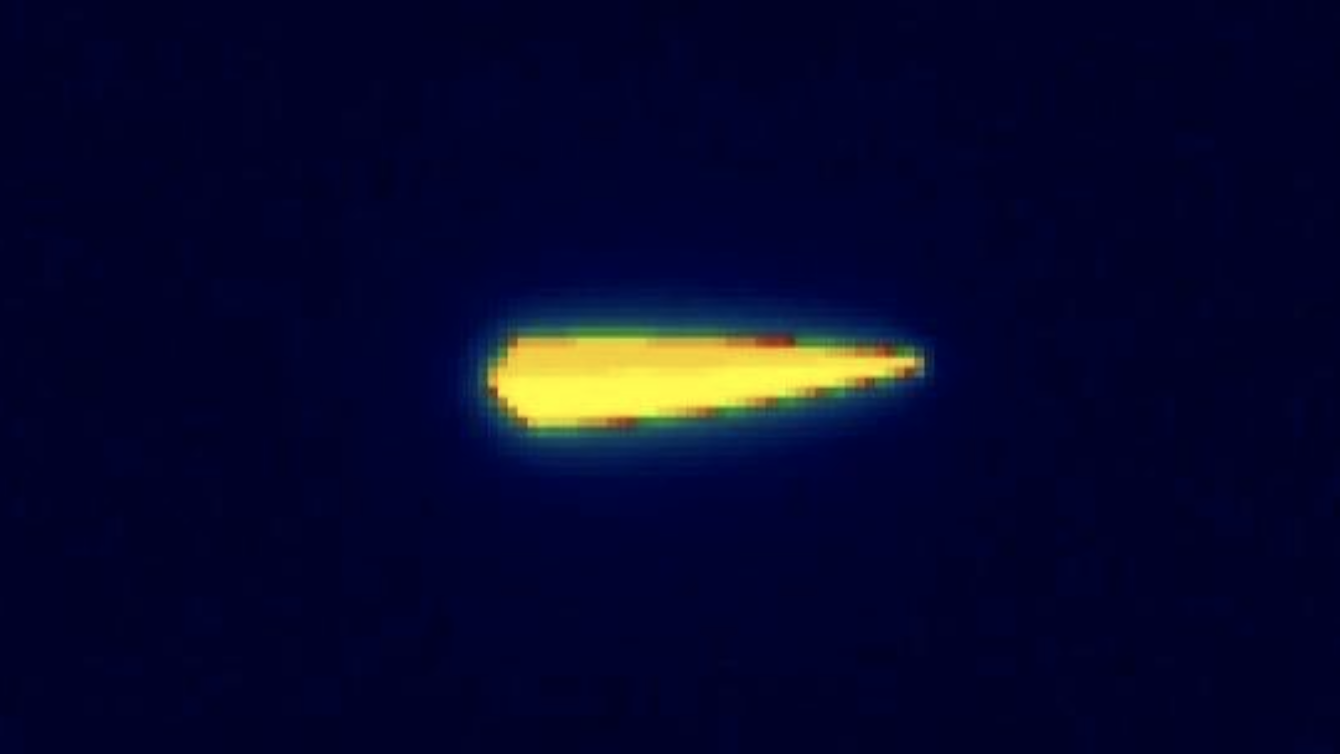
An infrared view of the CSIS simulated hypersonic glide body, displaying temperature differentials across the upper and lower sides.
(CSIS Missile Defense Project)
WASHINGTON — As the Pentagon moves forward with new hypersonic missile tracking satellites, officials need to prioritize providing 24/7 coverage of the Indo-Pacific region as soon as possible, according to a study released today by the Center for Strategic and International Studies (CSIS).
The study further cautions the Defense Department to keep a keen eye on ensuring that new missile warning/tracking sensors can provide fire-control quality data (meaning data good enough to use to target and knock a hypersonic missile out of the sky) — especially for the Missile Defense Agency’s Glide Phase Interceptor that is still in development.
Called “Getting on Track: Space and Airborne Sensors for Hypersonic Missile Defense” and authored by CSIS Fellow Masao Dahlgren, the study is designed to help policy-makers understand the tradeoffs that need to be weighed as technical and schedule decisions about missile warning/tracking sensor networks are being made.
The report, which provides in-depth models of different architecture options, “elaborates these tradeoffs, identifies principles to inform future architectures, and highlights temptations to avoid,” CSIS says in its introduction.
Dahlgren told Breaking Defense in an interview that the report identifies three major requirements for sensors as part of a an effective anti-hypersonic defense network: a diverse architecture, with satellites in multiple orbits and consideration given to new airborne sensors; fire-control capability matched to interceptors across the services; and the rapid ramping up of “persistent” coverage of the Pacific theater to keep eyes on China’s evolving missile capabilities.
“We’re not going to prescribe any architectures, but we identify places that require more attention,” he said.
In particular, the study warns the Pentagon against focusing only on low Earth orbit (LEO) — where the Space Development Agency (SDA) is deploying its large constellation of Tracking Layer satellites — for hypersonic missile tracking.
“A pLEO [proliferated LEO] architecture provides resilience to certain kinds of counterspace threats but not others. Indeed, putting all one’s eggs in the LEO basket may incur risks: vulnerability to systemic threats that affect the entire orbital regime,” the study says.
As for airborne sensors, the study points out that the Missile Defense Agency (MDA) and the Air Force in the past have studied using radar, including those carried on the F-15 and F-35, and notes that this technology is “mature.” While not a feasible solution for every region nor as a sole option, the study says that “airborne sensors could serve an interim system, backfilling coverage while a space constellation is deployed. Additionally, airborne sensors might serve as an underlay for space sensors, increasing coverage density in these critical regions.”
Dahlgren said that the second critical issue is fire control. “There’s a healthy debate going on over how we will do fire control from space,” he said, referring to the differing approaches being taken by SDA with MDA.
SDA has been concentrating on wide-field-of-view sensors for the Tracking Layer under its FOO Fighter (“Fire-Control On Orbit-Support-To-The-War Fighter) project, whereas MDA since 2018 has been developing a medium-field-of-view missile defense fire control sensors under the Hypersonic and Ballistic Tracking Space Sensor (HBTSS) program.
A key question is “how do we how do we accelerate and scale some of the fire control concepts that we’ve been talking about?” he said.
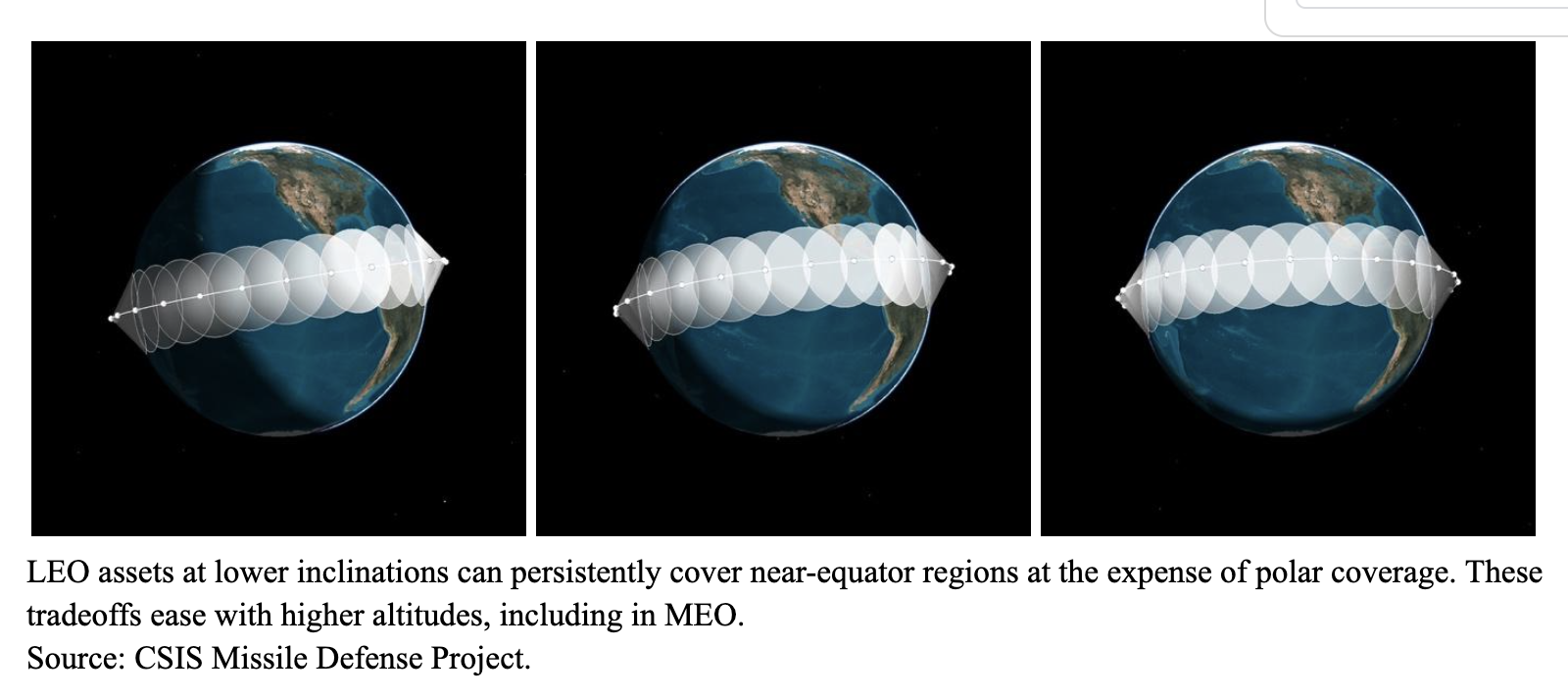 The third piece is about scheduling, Dahlgren said. “The big component here is that you can have two orbital … constellation designs, but the ramp up in getting coverage might be drastically different. And so we need to be thinking about how we’re ramping up these architectures, how much we get halfway through the deployment process, how much persistent coverage we’re getting,” he said.
The third piece is about scheduling, Dahlgren said. “The big component here is that you can have two orbital … constellation designs, but the ramp up in getting coverage might be drastically different. And so we need to be thinking about how we’re ramping up these architectures, how much we get halfway through the deployment process, how much persistent coverage we’re getting,” he said.
“The key word here is persistence,” Dahlgren stressed. “How do we get persistence over the regions we care about? That hasn’t been as explicitly put into prior work until now. This report puts into sharp relief.”
He emphasized that the critical region is INDOPACOM, noting that one answer to the problem is building a network that ensures at least two satellites are in “low inclinations” over the region at any one time.
All and all, according to the study, the broadest and most persistent satellite coverage would be guarantee by a “hybrid” architecture using LEO, MEO and highly elliptical (HEO) orbital planes.
“Hybrid constellations can combine their coverage hotspots to increase emphasis on critical regions. A LEO constellation with lower inclinations can provide dense coverage of the Indo-Pacific region, while a smaller constellation of MEO and HEO assets can provide an additional layer of resilience and selective emphasis on the poles,” the study finds.
